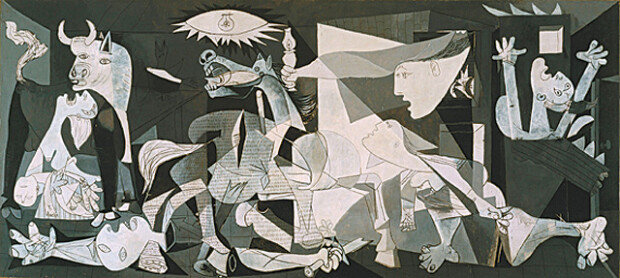Masterpiece born out of tragedy
Masterpiece born out of tragedy
Posted April. 23, 2020 07:33,
Updated April. 23, 2020 07:33

What can an artist do in the face of tragedy? “Guernica” might be Pablo Picasso’s answer to the question. Picasso has become the most well-known anti-war painter with this painting after he had spent years drawing female nudes as a leading Cubist painter. What led him to become an anti-war painter?
In January 1937, the Spanish government requested Picasso who was living in Paris at the time to finish a mural to be placed in the Spanish exhibition hall at the 1937 Paris International Exposition. Picasso did not have many novel ideas at first. He initially sketched a nude model lying on a sofa and himself in his art studio, which was what he had been drawing his entire life. Meanwhile, a horrific tragedy took place in his home country. In the height of the Spanish Civil War, the Nazis bombed a small town called Guernica in northern Spain, taking more than 1,700 lives away. Most of the victims were women and children. Picasso who was infuriated by the devastating news ran into his studio and started painting. This time, it was about anti-war. He finished a work of massive size with eight-meter width in just 35 days.
His painting features a myriad of brutal images that can be found in a battlefield – a crying woman holding a dead child, a fallen soldier with a broken sword in his hand, wounded animals bellowing, screaming women, and bodies whose limbs are cut off. The massive black and white painting in a cubist style vividly delivers the bizarre tragedy of war. “Guernica” had been exhibited at numerous locations worldwide after Paris and become a symbol of anti-war.
Those who did not appreciate Picasso’s work mainly dedicated to muses paid respect to his anti-war painting. While the Nazis occupied Paris during World War II, a Nazi officer saw a picture of “Guernica” in Picasso’s studio and asked if Picasso painted the piece. Picasso answered, “No, you did.” His answer was true. Without the tragedy in Guernica, there would have been no reason for Picasso, a painter of muses, to become an anti-war painter.







